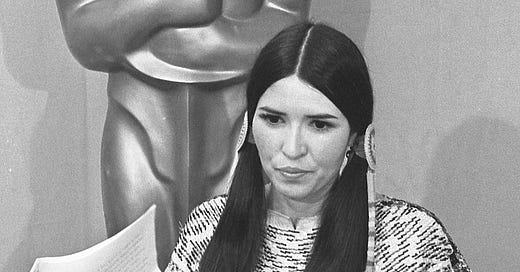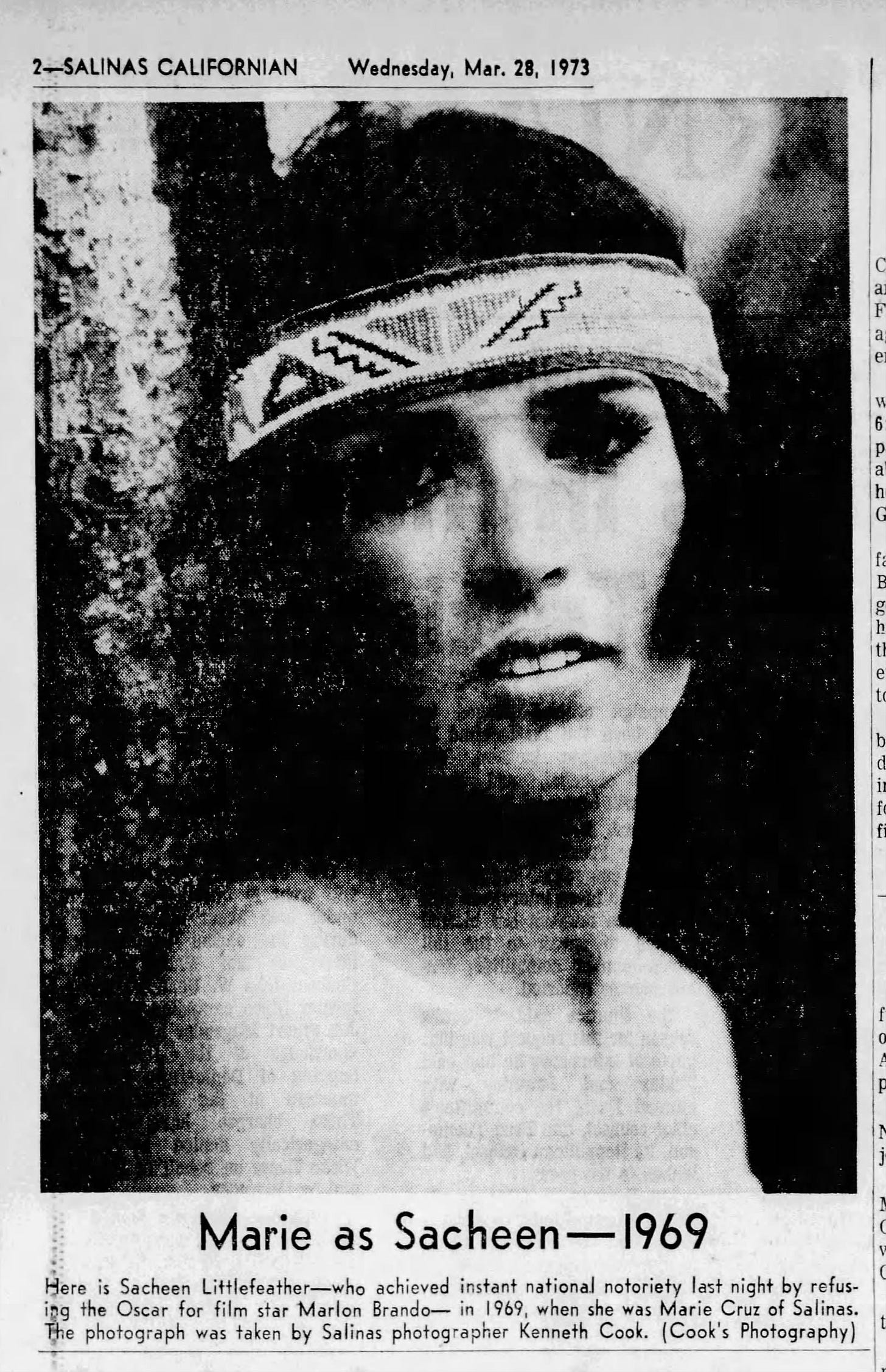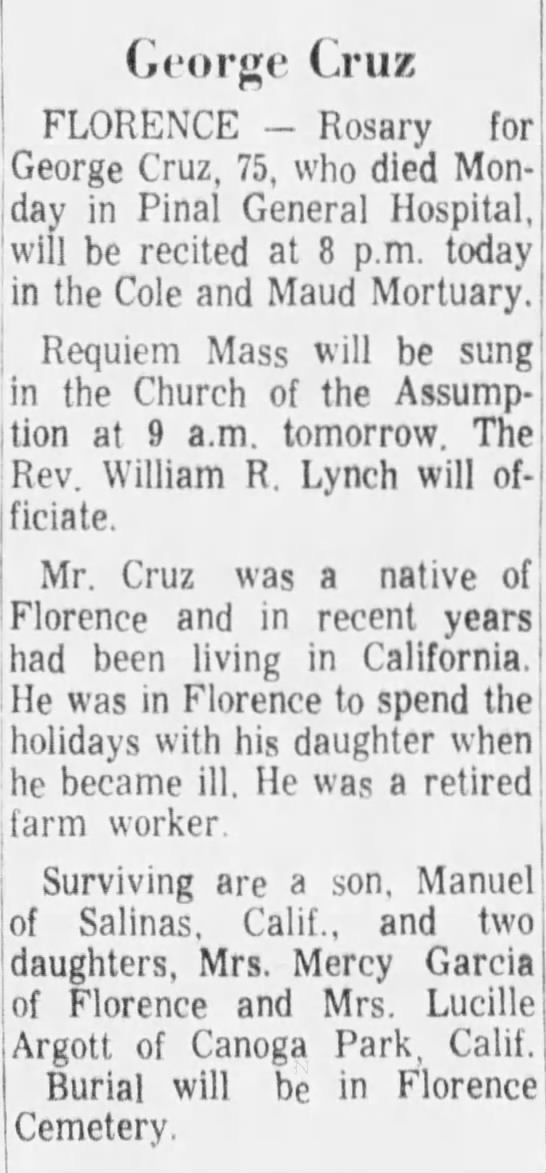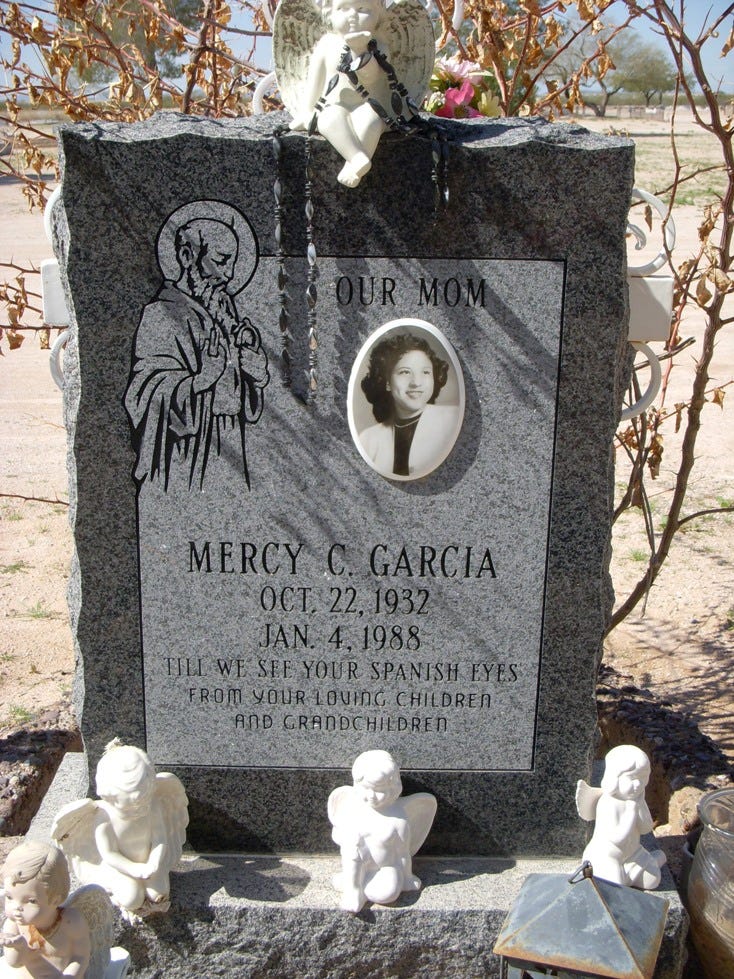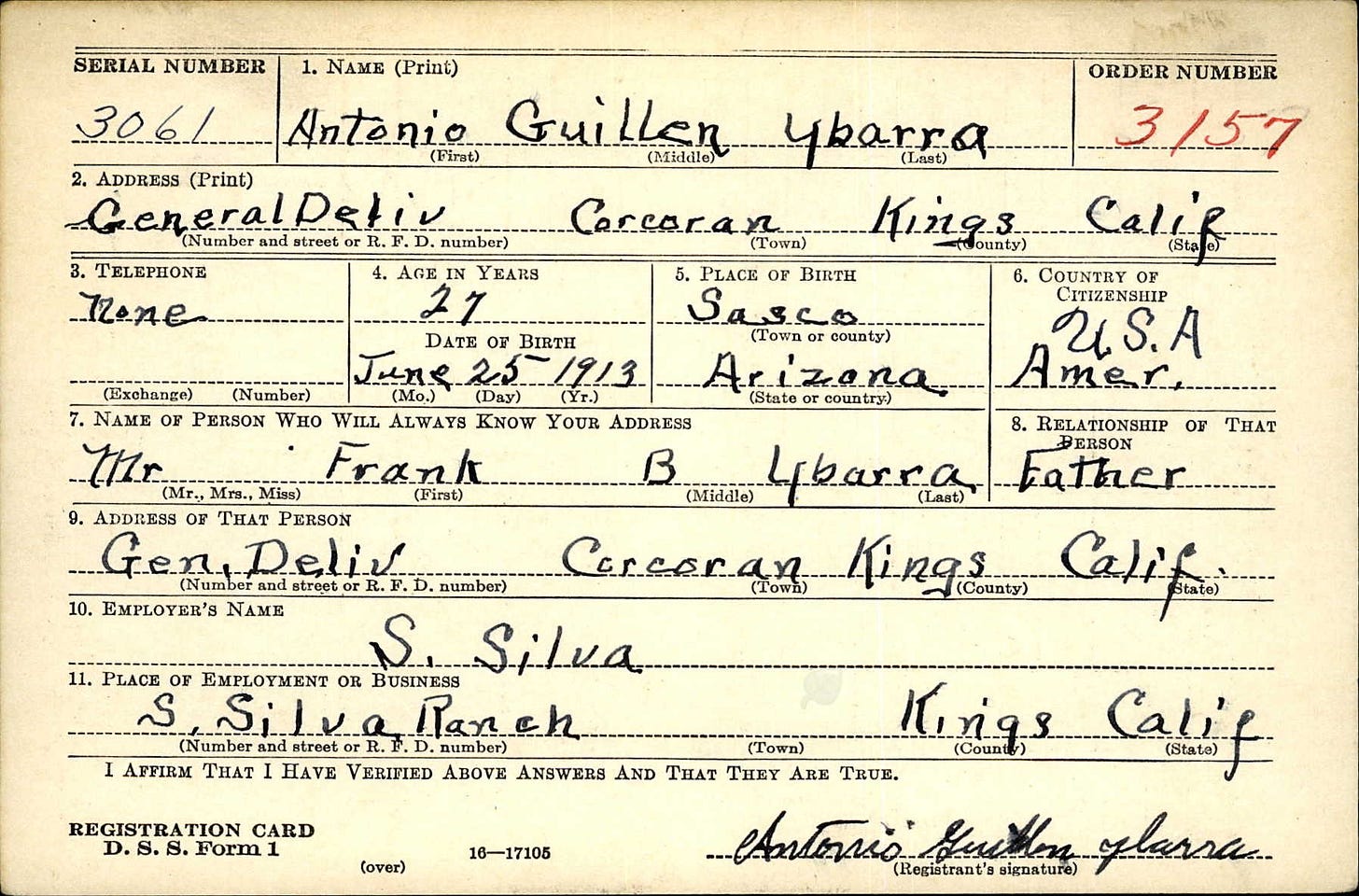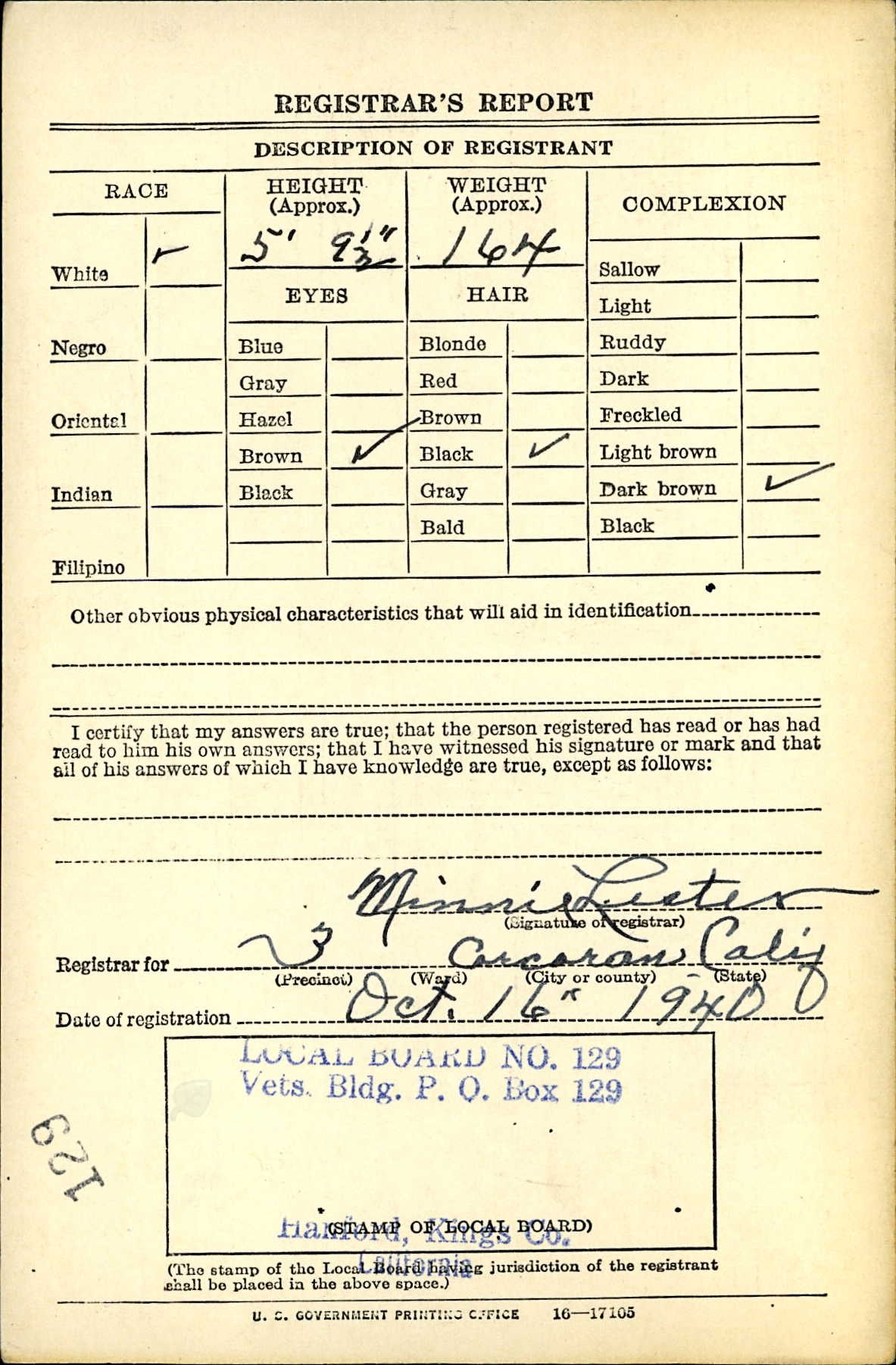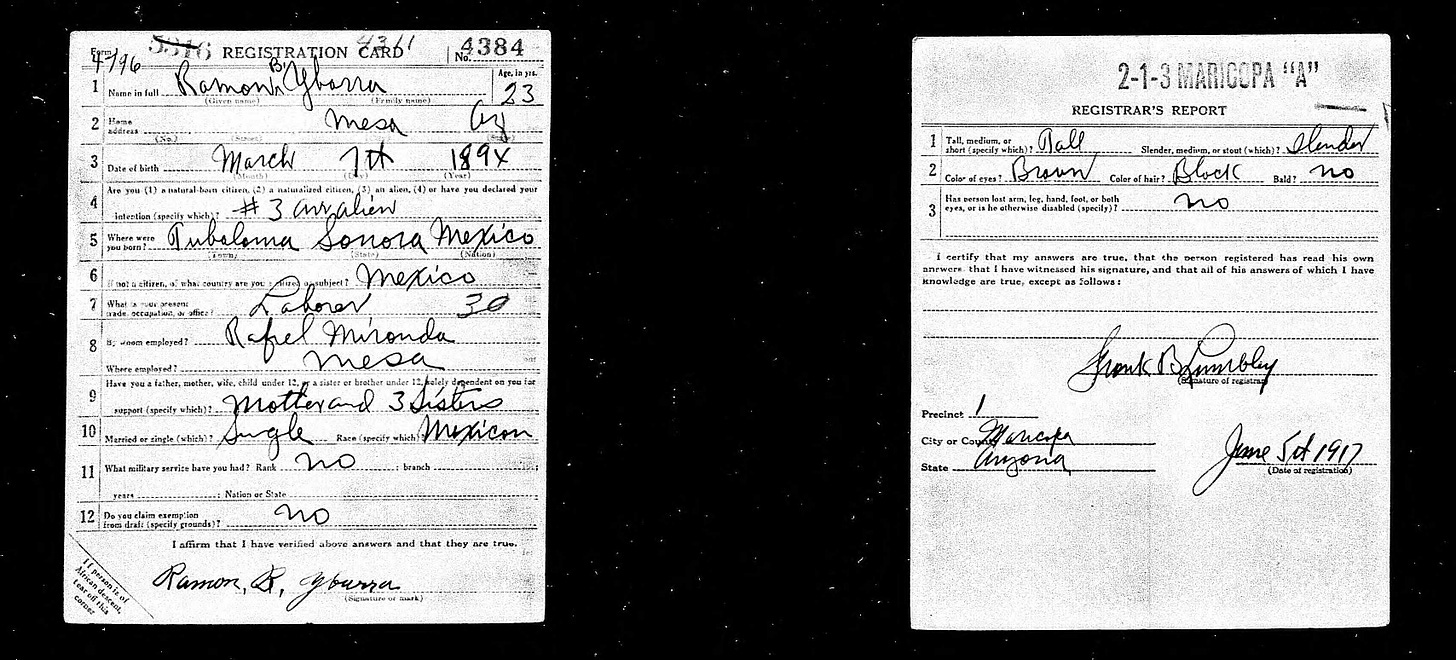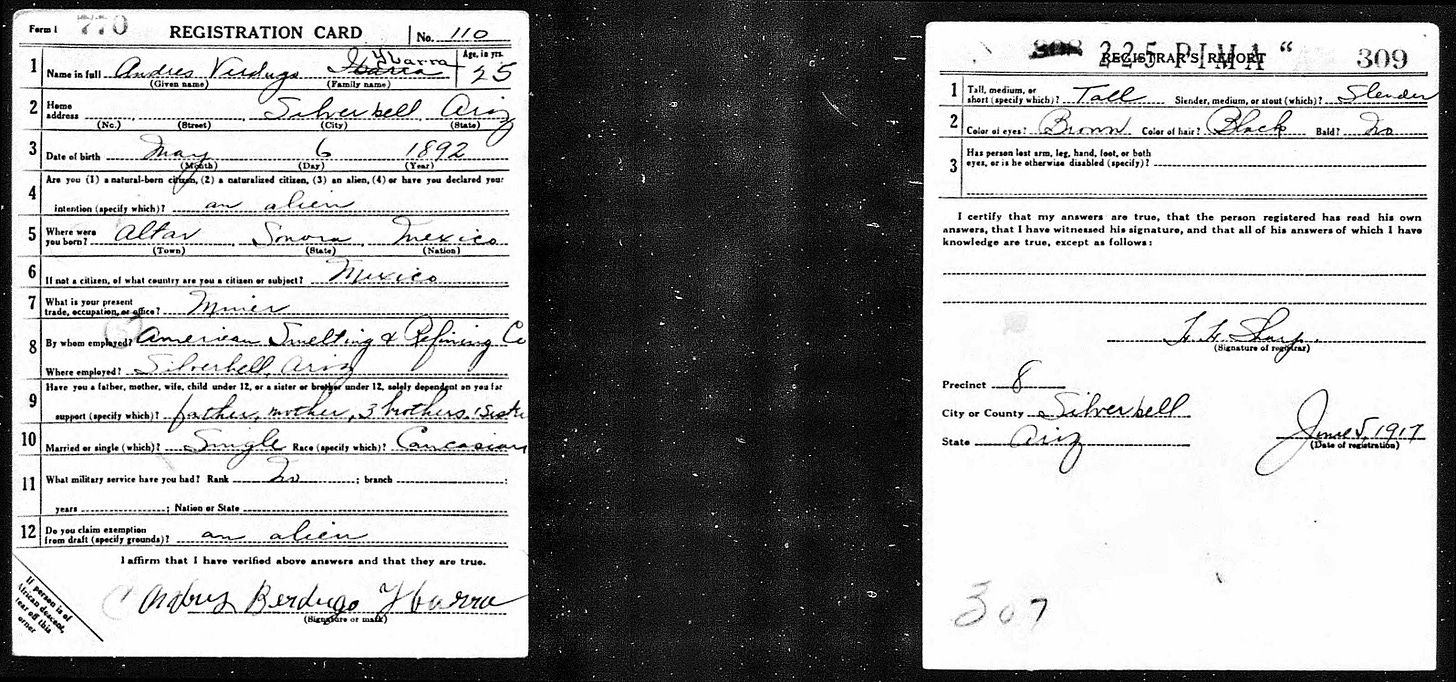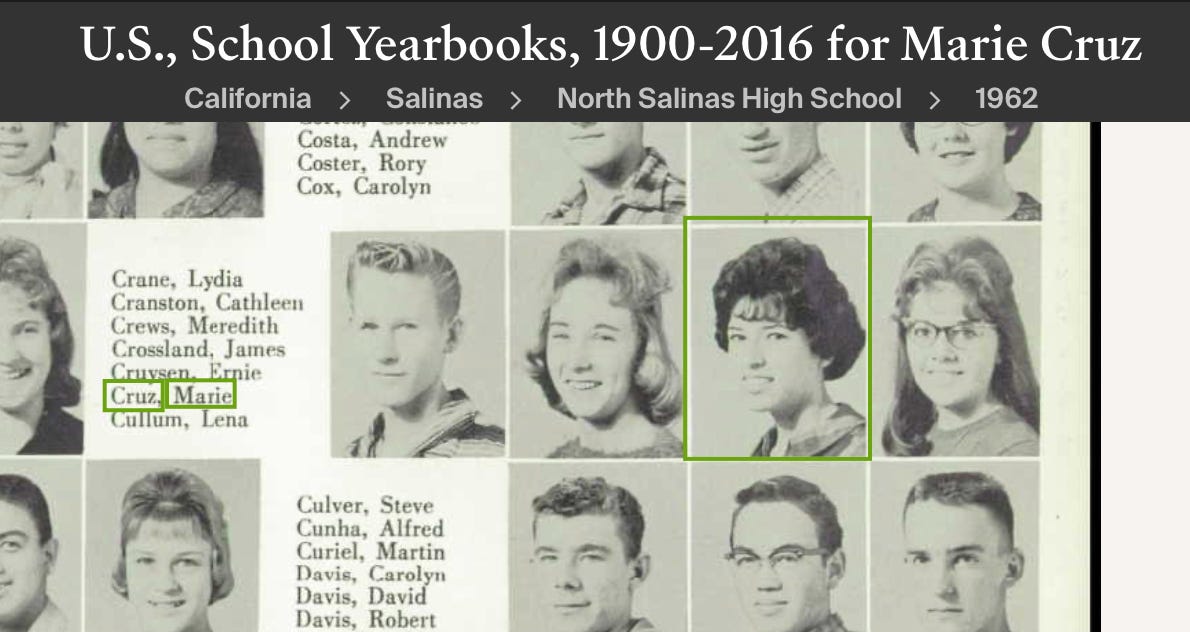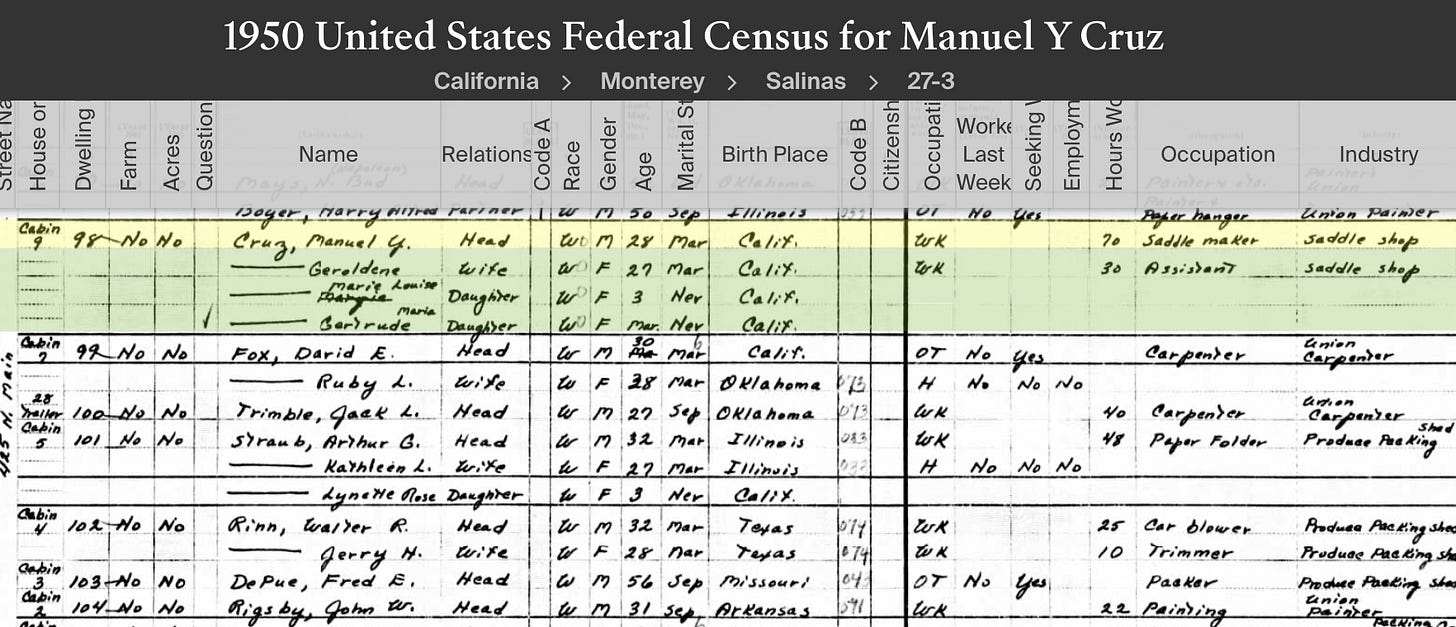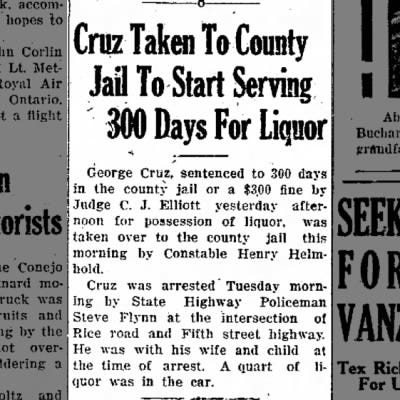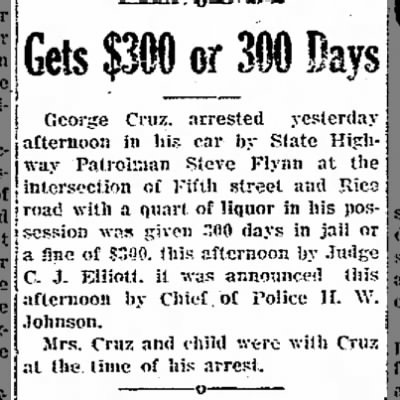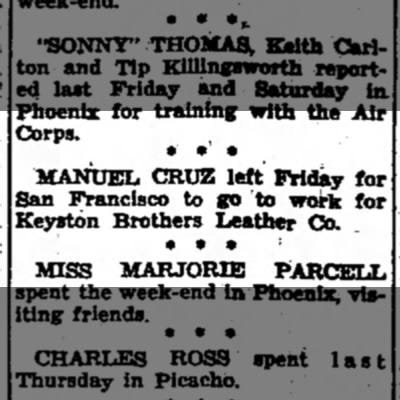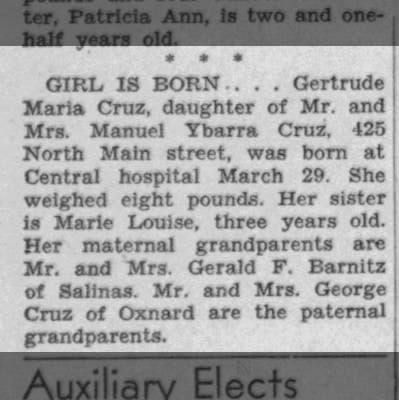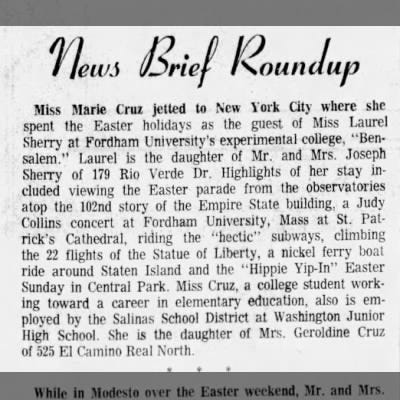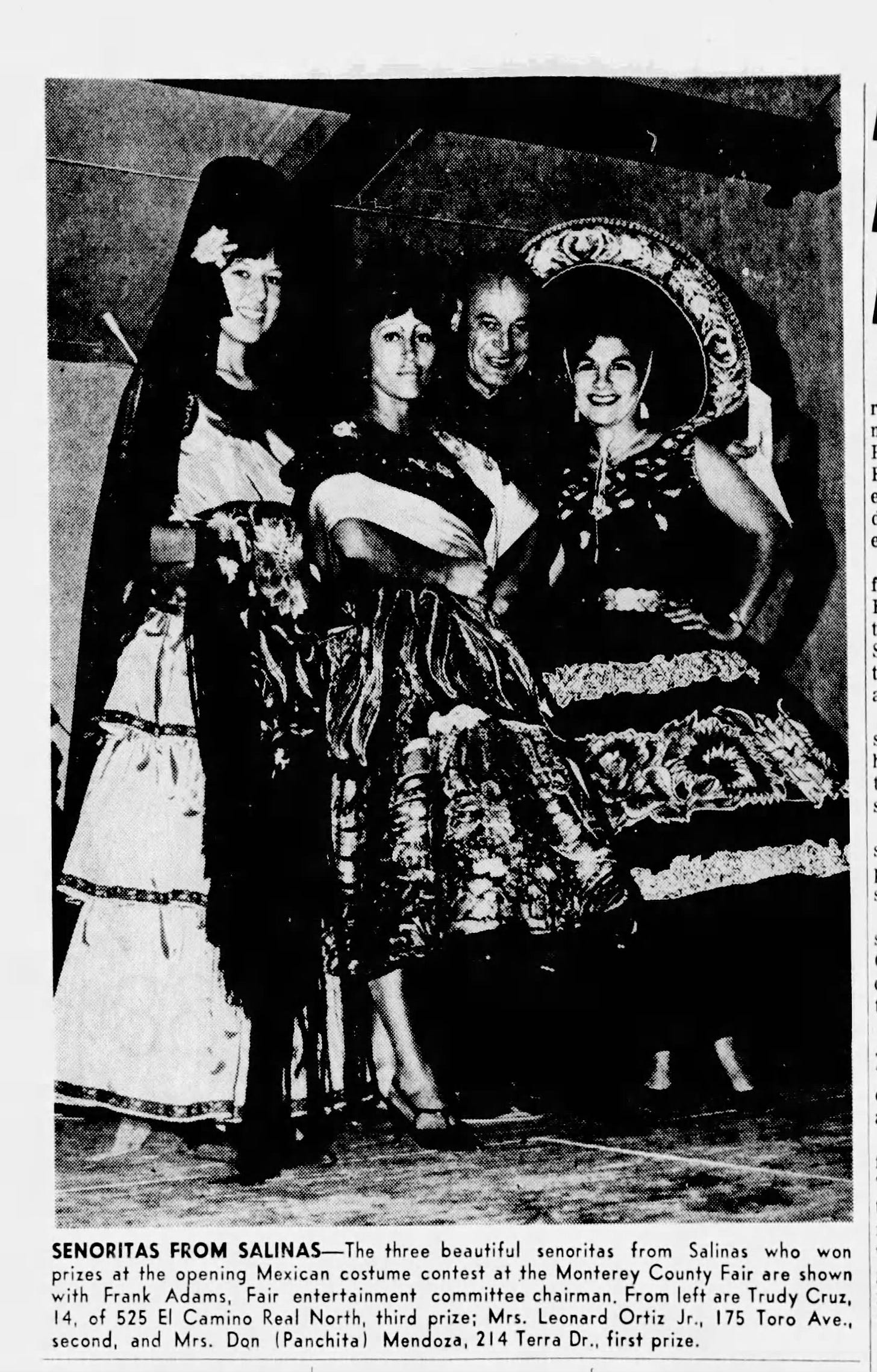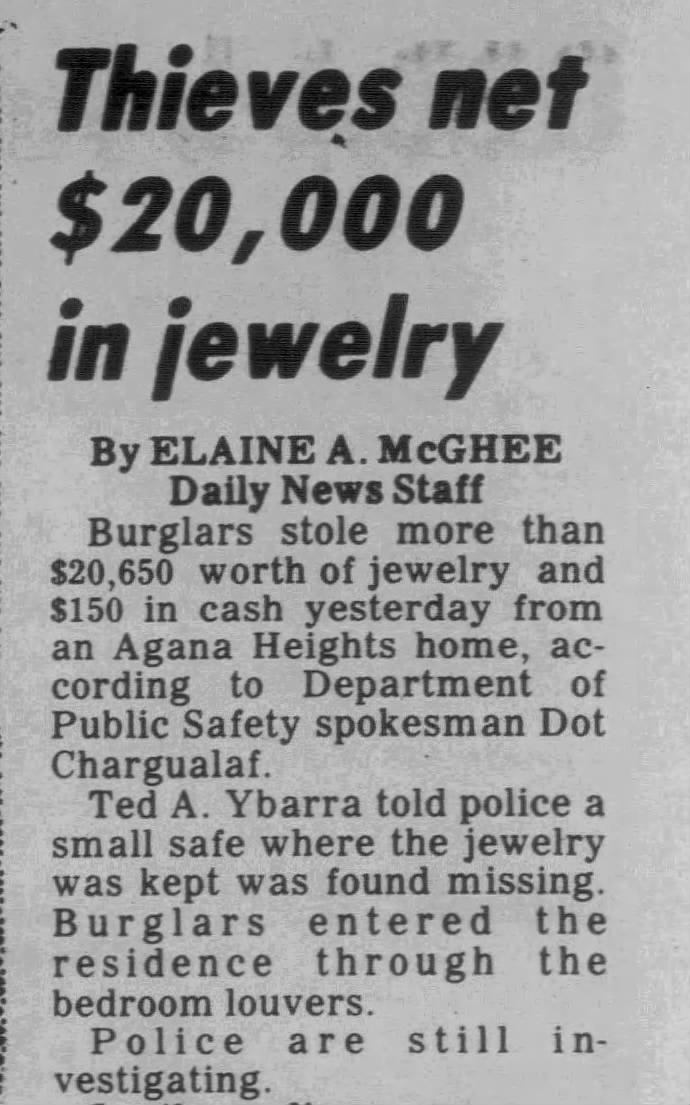
Certainly, for Native Americans with dreams of acting and filmmaking, this includes participating in the Oscars. Also known as the Academy Awards, staged annually by the Academy of Motion Picture Arts and Sciences and broadcast to millions from Los Angeles, California, in recognition of excellence in film.
However, to this day, no Native American woman of any tribe located in the United States has stood on that stage to receive or give an award. To date, only one Native American man has received an Oscar: Wes Studi of the Cherokee Nation in Oklahoma won an honorary Oscar at the Governor’s Awards in 2019. His response to his award is revealing. Addressing the need to break out of ‘leathers and feathers’ roles, he said, “Fortunately, I’ve been able to cross over in a few roles over the years. Sometimes it’s a matter of two steps forward and one step back.”
Graham Greene (although a Canadian citizen, his people, the Six Nations of the Grand River, were exiled from their homelands in New York State after siding with the British in the Revolutionary War) was nominated for Best Supporting Actor in 1991 for Dances With Wolves.
And in contiguous countries where some American Indian tribes exist on both sides of the border: Canada and Mexico, two First Nations Canadians were nominated: Chief Dan George and Buffy St. Marie, and one Native Mexican were also nominated, Yalitza Aparicio.
However, it is Sacheen Littlefeather, an actress and activist who has self-identified as White Mountain Apache in interviews since 1970 and has added ‘Yaqui’ in more recent years, who has been the recipient of an apology from the Academy. Despite having a family with no declared nor documented ties to either of those tribes since they arrived in the U.S. from Mexico in the mid-19th century.
Investigating Tribal Claims
Working with a team of Native American researchers, we assembled Littlefeather's family tree (attached below). We could find no ties between her father's family, the Cruz family of Mexico, and her claimed tribes. We went back to 1850 on her paternal side (from which she claims Native American ancestry) and viewed the lives of hundreds of her relatives. We reviewed the lives of not only her direct ancestors but cousins (both immediate and distant), aunts, uncles, great-aunts, and great-uncles many times removed. None identified as Native American, nor did they live with or marry members of the White Mountain Apache Tribe (or any Apache tribe) nor anyone identifying as Yaqui.
And yet, in a recent piece about the Academy's apology and Sacheen’s recent death, the New York Times describes Littlefeather as "Sacheen Littlefeather, an Apache and Yaqui actress and activist." Based on an examination of her family tree, at most, it could be said she self-identifies as such, but on what basis, we do not know.
Oscars 1973
In 1973, Littlefeather took the stage during the 45th Academy Awards ceremony to reject the actor Marlon Brando's Oscar for the industry's stereotypical and largely negative portrayal of Native Americans.
Brando writes in his typed speech rejecting the award, not read in full during the televised event but published in full in the New York Times on March 30, 1973: "When they laid down their arms, we murdered them. We lied to them. We cheated them out of their lands. We starved them into signing fraudulent agreements that we called treaties which we never kept. We turned them into beggars on a continent that gave life for as long as life can remember. And by any interpretation of history, however twisted, we did not do right. We were not lawful nor were we just in what we did. For them, we do not have to restore these people, we do not have to live up to some agreements because it is given to us by virtue of our power to attack the rights of others, to take their property, to take their lives when they are trying to defend their land and liberty, and to make their virtues a crime and our own vices virtues."
In the spirit of this, Ms. Littlefeather was quoted on the Academy Museum Podcast earlier this year in an episode titled "Marlon Brando Cannot Accept this Very Generous Award,"
“I knew that I paid the price of admission so that others could follow. That I had done something, that I was the first to make a statement, a political statement. The first Native American Indian woman, the first woman of color to ever make a statement at the Academy Awards, telling the truth about the way that it really is. Not the second, not the third, not the fourth, but the first one - and that will always historically be true.
In time, the doors would be opened. And in time, the things that I wanted back then would become a reality. All we were asking, and I was asking, was 'Let us be employed. Let us be ourselves. Let us play ourselves in films. Let us be a part of your industry, producing, directing, writing. Don't write our stories for us. Let us write our own stories. Let us be who we are.' This is all I was saying."
In this interview, she again asserts, "My father was Native American Indian." Certainly, she dressed the part on stage and has continued to do so in the half-century that followed.
What Does ‘Native American’ or ‘American Indian’ Mean?
The buckskin regalia she wore to the event projected the false claim that her father's family possessed direct experiences of discrimination as citizens of Native Nations as part of the policies enacted against tribes by the United States. And that the U.S. Gov't successfully made the homelands of her paternal family's Native Nation part of the country that now constitutes the mainland lower 48 states of the United States. From our examination of her tree, we could find no relatives who endured the impacts of these policies of Manifest Destiny and occupation conducted by the U.S. federal government.
Indeed, Native Nations in northeastern Mexico fought for their autonomy from Mexico, and I am not discounting that she could have ties to those nations. However, we were unable to confirm this. She can certainly describe her father as an American of Mexican descent and if the research was done to verify ties to a Native Nation in Mexico, as a Native Mexican. However, it is not in my remit to ascertain a Mexican Indian connection, just her stated Native American/American Indian claims.
What I can say with confidence is that Ms. Littlefather's father was Mexican American, and her mother descended from Dutch nobility that colonized Manhattan and Brooklyn (and of more recent Dutch/German immigrant descent). Her father may be of Papago (now called Tohono O'dom) or Pima descent, but we have not confirmed that. His Cruz line appears to go to Mexico City, and his maternal line is from Hermosillo, Sonora, Mexico, and the villages surrounding it, which are the homelands of the O'dom/Pima people. We found a single distant cousin who, in his obituary, was identified as of "Papago-descent." However, he may possess ancestry Sacheen does not. A brief review of his ancestry found no ties to the claimed tribe.
Timeline of White Mountain Apache Claims
In trying to understand how Marie Louise Cruz became Sacheen Littlefeather, I found it necessary to put together a timeline of her claims based on published interviews, photographs, and other public documentation. I focused on early coverage/documentation of her life from the 1950s to the 1970s. Her Yaqui claims did not emerge until the late 1980s, so are not addressed in this timeline.
As the timeline below shows, her claims to be a specific federally-recognized tribe, the White Mountain Apache, began from the get-go. I honestly had not expected this. I had thought she would have begun with a vague Apache claim and then settled on a specific tribe as she learned more about them.
Early timeline of Sacheen’s claims to White Mountain Apache identity:
1950 - US Census places her living, aged 3, with her parents and newborn sister. Says she was removed from her parents and placed with her Barnitz grandparents around this time.
1964- Graduates from North Salinas High School.
1965 - Attends Hartnell College (according to ex-boyfriend’s mother in a newspaper interview), later transfers to San Jose State.
Sep 13, 1966 - Father dies at 44 years old. Sacheen (then called Marie) is 19.
(Estimated) 1967 - Quoted as being in a mental hospital for a year at age 20.
19 July 1968 - Clyde Warrior dies. Brando s
ays in his autobiography that he was introduced to him at this time and began his involvement with Native issues several years before receiving Littlefeather’s 1972 letter (she claimed in an interview to have sent the letter to Brando via Coppola to get the actor to become involved in Alcatraz).
Nov 20, 1969 - Alcatraz occupation begins.
1969 - Compiles modeling portfolio with photographer Kenneth Cook of Cooks Photography in Salinas. He is quoted saying, “She wanted to capitalize on the Indian thing. She’s a big phoney.”
Jan 14, 1971 - Appears in The Oakland Tribune and identified as Sacheen Littlefeather in a photo illustrating an article.
January 16th 1971 - KRON-TV news Sacheen Littlefeather Modeling For Photo Shoot (1971) https://diva.sfsu.edu/collections/sfbatv/bundles/238563
Mar 28, 1971 - San Francisco Examiner “Sacheen Littlefeather (White Mountain Apache) and Cheri Nordwall (Chippewa-Shoshone) participating. Costumes will be modeled and described at the 2 p.m. performance.”
May 15, 1971 - Daily News (NY) “Declared Miss American Vampire, Sacheen Little-Feather won the title in a contest that gained her a role in the movie “The Gang That Couldn’t Shoot Straight,” based on a Jimmy Breslin novel. Sacheen is a White Mountain Apache Indian.”
Jun 11, 1971 - Alcatraz occupation ends. Oct 23, 1971 - Marries Michael Rubio, engineer. His parents were born in Spain.
Abt. March 1972 (estimated) - Gives letter to Francis Ford Coppola (her neighbor - Pacific Heights?) addressed to Brando and requesting he join the Alcatraz fight.
Mar 14, 1972 - The film The Godfather released.
Sep 12, 1972 - San Francisco Examiner “On the Square: Sacheen Little-feather, organizer of American Indian Fair at Palace of Fine Arts Sept. 23-24”
Sep 28 1972 - Honolulu Advertiser: Herb Coen's column, “Sacheen Littlefeather, the Bay Area Indian Princess, and nine other tribal beauties are sore at Hugh Hefner. Playboy ordered pictures of them, riding horseback nude in Woodside and other beauty spots, and then Hefner rejected the shots (by Mark Fraser and Mike Kornafel) as “not erotic enough.” Why do them in the first place? “Well,” explains Sacheen, “everybody says. black is beautiful – we wanted to show that red is, too.”
Jan 2, 1973 - Associated Press (Bob Thomas) “In Support Of Indians Brando Demurs.”
Jan 7, 1973 - San Francisco Examiner
Feb 27, 1973 - Wounded Knee begins.
Mar 28, 1973 - The Californian: Brando's Salinas Stand-in Sacheen Littlefeather formerly Marie Cruz of Salinas extends her hand to actors Liv Ullmann and Roger Moore while refusing the Best Actor Oscar for Marlon Brando at last night's Academy Awards ceremony. (UPi photo) “Ex-Salinas Girl Speaks For Brando” Salinas citizens who sat glued to their TV sets during last nights Academy Award presentations may have recognized Miss Sacheen Littlefeather as Marie Cruz of Salinas. Miss Littlefeather (or Miss Cruz) spoke before a national television audience on behalf of actor Marlon Brando in rejecting an Oscar award as Best Actor for Brandos performance in “The Godfather.” One Salinas resident who recognized Miss Cruz clad in Indian clothes and feathered headband was Mrs. Walter Silacci, who said, “I think she handled herself beautifully last night.” Miss Cruz was a close friend of the Silacci family until she left Salinas for a modeling career in the San Francisco Bay area. Miss Cruz told Academy members last night that Brando re-
SACHEEN Page 2, Col. 4 SACHEEN (Continued From Page 1) fused the Oscar award because of injustices committed against American Indians by the motion picture industry. Miss Cruz graduated from North Salinas High School as a journalism student in 1964. According to Mrs. Silacci, Miss Cruz attended Hartnell College, then transferred to what was then San Jose State College. “I know she wanted to be a teacher,” Mrs. Silacci said. But in 1969 Miss Cruz compiled a portfolio of photographs as she began a modeling career that carried her into the San Francisco Bay area. It was while in the Bay area that she became involved with the Indian takeover of Alcatraz Island. According to Mrs. Silacci, the Alcatraz Indians were responsible for giving Miss Cruz the Indian name Sacheen Little-feather. After one occasion in which Miss Cruz, 26, returned to Salinas briefly, Mrs. Silacci recalled Miss Cruz saying, “She was going to help the Indians.” “I told her to keep in touch, but she didn’t,” Mrs. Silacci said. The photographer who compiled Miss Cruz’ modeling portfolio was Kenneth Cook of Cooks Photography. Even then many of the photographs depicted Miss Cruz in Indian costumes. Mrs. Silacci claims Miss Cruz is part Hopi Indian, but others who know her locally say she is part Apache. “I thought I recognized her on TV last night,” Cook said. “The last time I saw her was in 1969. She wanted to capitalize on the Indian thing, he said. She’s a big phoney,” Cook said. Miss Cruz's mother, a sister and grandparents still live in Salinas at 525 El Camino Real North. Another sister lives in San Francisco. The family has refused to speak with newsmen about Miss Cruz’s appearance last night. The grandfather, G.F. Barnitz today complained all the publicity heaped upon “Brando, Brando, Brando. Can't they leave a person alone,” he said.
Mar 29, 1973 - Santa Cruz Sentinel Sacheen Grew Up In Salinas SALINAS. Calif. (AP) - Sacheen Littlefeather, the part Indian model who shook the Academy Award audience with Marlon Brando's Oscar rejection message, grew up in Saunas as Marie Cruz. She is the daughter of Manuel Cruz, a skilled saddle maker and leather craftsman of Apache blood. He died of cancer about five years ago while Marie was a student at Hartnell College here. Her mother is of English descent. Mrs. Walter Silacci of Salinas said she came to know and admire Marie when she and her son, Steven, were classmates at Hartnell and dated for several months. "She is a lovely and brilliant girl and truly committed to what she believes in," Mrs. Silacci said today. After her father's death, Marie went to San Francisco and started a career as a model. Adam Nordwall, one of the leaders in the Indian occupation . of Alcatraz, said Marie supported that Indian protest action and adopted the name of Sacheen Littlefeather. She is married to Michael Rubio, an engineer. Rubio, interviewed by phone at his San Francisco apartment, said he expected, her to return home today. "Sacheen and Brando have known each other for close to a year through their interest in Indian rights," he said. Nordwall said Miss Littlefeather went to Los Angeles two weeks ago to see Brando. But she did not tell him anything in advance about the Oscar protest, Nordwall said. Nordwall said Sacheen is a leader in the Affirmative Image Committee. He said its goal and purpose are to review and protest television films and cartoons depicting Indians "as savages and something less than human." Besides her modeling work, Nordwall said, Sacheen has played some bit parts in movies. But, he said, she never has played an Indian part. She recently played the role of an Italian prostitute in a film shot in San Francisco, a "very un-Indian role," Nordwall said. In Salinas Sacheen's mother and sister, Trudy Cruz, refused to talk with newsmen. Sacheen kept herself in seclusion in Los Angeles after providing newsmen at the Oscar ceremonies with copies of Brando's statement that his action was a protest against "Hollywood's treatment of American Indians."
Mar 30, 1973 - San Francisco Examiner “IT WAS LIKE "CARRYING THE CROSS" Sacheen Littlefeather during S.F. conference today [Front Page] Examiner photo by Gordon Stone Brando Stand-in Tells Why in S.F. By C. P. McCarthy Sacheen Littlefeather, the San Francisco actress-model who played Marlon Brando on the Academy Awards show, today compared her Oscar-rejecting performance to "Christ carrying the weight of the cross." Despite the burden, the beautiful Apache said she appeared "for my people." Miss Littlefeather, 26, returned to San Francisco today following two days of seclusion in Los Angeles after providing newsmen at the Oscar ceremonies with Brando's statement that he rejected the Academy Award in protest of Hollywood's treatment of American Indians. Brando Called Responding to criticism of Brando for not having the courage to appear at the awards show himself, Miss Littlefeather said it took "a heck of a lot more guts to do what he did." She said Brando, ,whom she had met through his interest in the Indian movement, called her last Sunday and asked her to fly to Los Angeles for "something to See Back Page, Col. 7 Brando’s Stand-in Here—Tells Why She Spoke From Page 1 do with the Academy Awards." It was not until Tuesday, the day of the awards show, that she learned exactly what it was she was to do, she said. It was her decision not to read Brando's lengthy statement on the televised show, she said, and the short speech with which she rejected Brando's award was her own. "I spoke from my heart. Those words were writen (sp) in blood, perhaps my own blood," she said. "I felt about like Christ carrying the weight of the cross on my shoulder." Miss Littlefeather, who grew up in Salinas as Marie Cruz, is married to Michael Rubio, an engineer. She adopted the Indian name when she worked in support of the Indian occupation of Alcatraz in 1970. She views her appearance on behalf of Brando and the Indian movement more as a responsibility than an opportunity. "I'm not an opportunist," she said firmly. "It was a tremendous responsibility." She will be at the Festival of Broken Treaties a display of Indian arts, crafts, dancing and fashions at 4 p.m. tomorrow at the Oakland Auditorium.
Meanwhile, further back in the same issue of SF Examiner on page 17, “Task Force Hears Indians” WOUNDED KNEE (S.D.) (AP) - Possible settlement of the 31-day occupation of Wounded Knee by militant Indians rested partially today with a government body that had been only 15 days away from extinction. American Indian Movement members in the village are taking advantage of an opportunity to air civil rights grievances with an official pf the American Indian Task Force, part of the civil rights division of the U.S. Justice Department. Assistant U.S. Attorney General Kent Frizzell said Dennis Ickes, deputy leader of the task force, spent several hours listening to complaints in the village yesterday and continued to hear grievances today. "The task force was due to be phased out April 15," Frizzell said, "but I talked to Washington and they agreed to extend its. existence for whatever time is necessary.” As positive signs, he listed the meeting with Ickes and the facts that a cease-fire has not been violated since it took effect Tuesday.
Dec 6, 1974 - The Berkeley Gazette It happened last night by Earl Wilson Sacheen Littlefeather recalls how she turned down Brando’s Oscar NEW YORK - Sacheen Littlefeather remembers all too vividly that 1973 Academy Awards night when she turned down the Oscar for Marlon Brando Boos hisses some cheers and then all hell broke loose! "I couldn’t believe some of the stories I heard that they’d called Central Casting for somebody that looked like an Indian. How absurd! Marlon was and remains a good friend. I’d met him a year before through our mutual interest in Indians. I’m an urban Indian she paused to explain Never saw a reservation till I was 17. I lived in a shack in Salinas Cal. I remember the day we got a toilet and I brought the neighborhood kids in and gave them the tour.” “I was very sick once when Marlon called and I told him I was dying I was in a lot of pain He said ‘Why didn’t you call me?’ He sent me to a doctor and I got better. “So when he called me from Hawaii to ask me to make the Oscar speech I wanted to repay him, and it was straight from the heart. I wouldn’t take any money for it. I went to his house when he got there and waited for him to finish writing the speech The show started at 6 and I didn’t even get there till 8:30. I had four typewritten pages Howard Koch, the producer, said “You can’t read all that and I condensed it into 60 seconds — the greatest impromptu speech ever made. Sacheen broke into loud laughter recalling it. She is the loudest laugher around, excelled in laughing not even by Sam Levenson and Phyllis Diller. The laugh is most infectious. “I’m not really a militant, not a politician. I’m a talented lady and a beautiful woman — not a girl — a woman.” Sacheen said “I think the best thing I can do for the Indians is to be a good actress. I’ve had the wildest life” she broke into laughter again. My dad, an Indian, was a deaf mute, he died when I was 19. I used to act out messages to him It gave me an interest in acting. “I was a drug addict when I was 20, I was a three-time suicide case, I spent a year in a mental institution. When the doctors came in and said ‘Why are you here?’ I’d cross my eyes and slobber and say, 'Because I’m crazy. You talk about ridiculous questions! They said I’d never get out but I did.” And now at the age of 28, Sacheen (real name Marie Louise Cruz) plays an Indian tribal counsel in “The Trial of Billy Jack” which is her eighth movie role. People still challenge her about whether she’s Indian. “They expect me to come in with a rifle on each hip,” she says. “I told my mother when I was 17 I wanted to see what our cultural background was and we got in a pickup truck and looked at this reservation. I was going back to the blanket as they say The Arizona people told me, “Get your blanket — out of here!” Sacheen’s married to Michael Rubio “Is he an Indian?” I asked. She was waiting for that question. “No, he’s an Injun — an Injuneer,” she laughed. “We met on a sailboat and he hated me. Then I went really schemin’ for him. He had no idea I was schemin’ on him. A year later we were married on that same sailboat.” Sacheen is full of Indian talk and laughed as she said one of the elders admonitions is, “Don’t be doin’ any teepee-creeping.” Have you got any papoose? … “Yeah, I got a big papoose … my husband.” The Indians have an expression “Indian time” which usually means unpunctual. Sacheen says Marlon Brando time is “worse than Indian time” which is why she got to the Oscar party very late. She’s been asked whether she’s Jewish. “I’ve never met any Schmo-hawks,” she said.
Sacheen’s Family Documentation Obituaries & Grave Markers
MANUEL YBARRA CRUZ (March 6, 1922 - Sep. 23, 1966) - Sacheen’s father’s obituary. The Californian, Salinas, California, 23 Sep 1966, Page 2
GEROLDINE MARIE CRUZ (March 18, 1923 - Jan. 25, 2009). Sacheen’s mother’s obituary. The Californian, Salinas, California, 16 Jul 2009, Page 6
ROBERTO GORGE “GEORGE” CRUZ (April 28, 1890 - Jan. 3, 1966) Sacheen’s paternal grandfather: Arizona Republic, Phoenix, Arizona, 6 Jan 1966, Page 12
ELIODORO B. YBARRA (Nov. 21, 1902 - June 20, 1963) obituary [Grandmother Tula Ybarra’s brother]. Owner of the Spanish Kitchen Cafe in Oxnard and lived in Thousand Oaks, California A number of Sacheen’s Ybarra relatives lived in the area. Oxnard Press-Courier, Oxnard, California, June 22, 1963.
MERCY CRUZ GARCIA (Oct. 22, 1932 - Jan. 4, 1988) [sister of Manuel Cruz]. "Till We See Your Spanish Eyes.” Buried in Florence, Pinal, Arizona, Jan. 4, 1988. None of her family are buried on tribal lands or in predominantly American Indian communities in Arizona.
Military Records
Manuel Y. Cruz - WWII registration card, father identifies as ‘White’ and notes he is deaf. In interviews, Sacheen refers to her father as a violent, alcoholic “Deaf Mute” Indian who terrorized her white mother. Working at Keyston Bros Saddler in San Francisco, CA.
Francisco "Frank" Ybarra - [Grandmother Anita Ybarra Cruz’s brother] WWII military registration card. He identifies as ‘White’ and lists his birthplace as TuGutama, Sonora, Mexico. He may be referring to Tubatama, Sonora, Mexico.
ANTONIO GUILLEN YBARRA - [Sacheen’s cousin & son of Frank Ybarra] WWII military registration card. Identifies as White. Born in Sasco, Arizona, a ghost town located in Pinal County, Arizona, west of Red Rock. Sasco, an acronym for the Southern Arizona Smelter Company.
ELIODORO BERDUGA YBARRA [Grandmother’s brother] World War II Registration Card. Identifies as White. 16 Oct 1940, Los Angeles, California.
RAMON "RAYMOND" BERDUGO YBARRA [Grandmother Tula Ybarra’s brother]. Identifies as ‘White’ on WWII registration card. His birthplace is Hermosillo, Mexico.
RAMON "RAYMOND" BERDUGO YBARRA - [Grandmother Tula Ybarra’s brother]. His “Race” is listed as Mexican and "#3 arr alien.” In 1917, he is still a Mexican citizen. Lists birthplace as Tubalema, Sonora, Mexico. He’s possibly referring to Tubatama, Sonora, Mexico in northwest Sonora. Founded as the Mission San Pedro y San Pablo del Tubutama in 1691. Tubutama was the headquarters of religious administration for the entire Pimería Alta during much of the Jesuit and Franciscan period of Spanish colonial rule. Father Antonio de los Reyes on 6 July 1772 submitted a report on the condition of the missions in the Upper and Lower Pimería Alta. This was his report on Tubutama: "The Mission at Tubutama, with one outlying mission station, lies eight leagues to the west and a little to the north of the Mission of Sáric. To the south lies the uninhabited land of Lower Pimeria and to the north are the Papagos and the other pagan nations up to the Colorado and Gila Rivers, some seventy leagues distance from this Mission.” “It is where Father Jacobo Sedelmayr, head of the Jesuit province of Pimería Alta, was stationed at the outbreak of the Pima Rebellion of 1751; it is where Jesuits gathered in 1767 for their expulsion; it is where Franciscans established their Pimería Alta headquarters in 1768; and it is where in 1776-77, Franciscan friars Francisco Garcías and Pedro Font cloistered themselves to write their lengthy accounts of their involvement in the 1775-76 overland colonizing expedition to Alta California led by Juan Bautista de Anza.”1
ANDRES VERDUGO YBARRA - [Grandmother’s brother] WWI military registration card. Identifies as Caucasian and his birthplace as Altar, Sonora, Mexico. He is still a Mexican citizen in 1917. Living in Silverbell, Arizona. Altar (O’odham [prev. called Papago] name is Wawuk) is small city and municipal seat of Altar Municipality in Sonora. U.S., World War I Draft Registration Cards, 1917-1918
Locations Sacheen’s grandmother’s brothers list as birthplaces.
Voting Records
FLORENCIO G. CRUZ [brother of Sacheen’s Grandfather George Cruz] registered to vote in 1908 in Florence, Pinal County, Arizona. Most Native Americans in Arizona were unable to vote until after the passage of the Voting Rights Act of 1965. Arizona was a state that until a 2013 US Supreme Court ruling, that was subject to Section 5 of the law requiring “Preclearance.” This was applied to jurisdictions that were considered to have a history of discriminatory election laws. Florencio also attended white public schools in Arizona and legally identified a ‘White’ on all legal documents.
Why this matters:
From Obstacles at Every Turn: Barriers to Political Participation Faced by Native American Voters, released June 4, 2020 by Native American Voting Rights, a project of the Native American Rights Fund.
“Perhaps the most notorious case came from Arizona, where the State Constitution provides that “No person under guardianship, non compos mentis or insane, shall be qualified to vote.” When two Pima Indians attempted to register to vote in the first presidential election following the passage of the 1924 Indian Citizenship Act, they were refused. The county clerk told them they were “under guardianship” and therefore could not vote. (p. 13)
In Porter v. Hall in 1928, Arizona sided with the county clerk, arguing the Indians were legally excluded from registering to vote because, in the famous 1831 Indian law case of Cherokee Nation v. Georgia, Chief Justice Marshall had written that the Indians’ relationship with the U.S. government “resembles that of a ward to his guardian.” To Marshall, guardianship was a loose metaphor; for the state of Arizona, it was an excuse to prevent Indians from voting. The State Supreme Court accepted that argument, contrasting “the Indian” with “a normal person” and ruled they were ineligible to vote despite being United States citizens. (p. 13)
In 1948, two Mohave men from the Fort McDowell Indian Reservation attempted to vote. One of them, Frank Harrison, was a returning World War II veteran, and this election would be his first opportunity to vote in a presidential election following his service to his country. When Harrison and his fellow Piman, Harry Austin, went to the county clerk’s office in Maricopa County, Clerk Roger Laveen flatly refused to register them, citing the Porter case and the con- stitutional provision concerning guardianship. Harrison and Austin filed sued in Superior Court and lost. Once again, a state court had ruled that the relationship between the federal government and tribes, commonly referred to as the trust relationship, was tantamount to insanity. (p.13)
Harrison and Austin appealed to the state Supreme Court, and the resulting case, Harrison v. Laveen, garnered national attention. Once again the State of Arizona argued that Indians should not be allowed to vote, noting that “Congress keeps a tight rein on the reservation Indian,” portraying Native people as animals to be protected by the State. (p. 13)
This time, the Arizona Supreme Court reached a different verdict. Justice J. J. Udall noted that it required a “tortuous construction” of the guardianship language in the state constitution to apply it to American Indians. Finally, in 1948, Indians had the right to vote in Arizona. (p. 13)
Literacy tests became notorious in the American South as an instrument of racist voting laws. Until prohibited by the Voting Rights Act in 1965 and the 1970 amendments, literacy tests were used to prevent, not just African Americans in the South from voting, but Native Americans as well. A survey of states in 1940 found that eighteen states had some form of a literacy test; six of those were western states with substantial Indian populations. (p. 14)
For example, an Arizona statute stipulated that only individuals who could read the U. S. Constitution in English could vote. (p. 14)
In 1973, a county in Arizona refused to seat a Navajo who had won a county commissioner election. (p. 122)
GEORGE CRUZ (farmer) and MRS. TULA CRUZ (housewife) [Sacheen’s paternal grandparents] registered as Republicans in Oxnard, California in 1926. California Voter Registration, 1926, Oxnard, Ventura, California
School Records
Why This Matters :
Why does it matter that Sacheen Littlefeather’s family attended public schools, and were even identified in school census records as ‘White?’ Let’s review the concurrent experiences of tribal members in Arizona vis a vis access to education outside of federal and church-run boarding schools whose goal was to “kill the Indian and save the man.” This is not to suggest Latinx students did not face obstacles, but they were not subject to policies and exclusionary tactics faced by tribal citizens.
The state of Arizona worked assiduously to exclude Native students and parents from participation in the public school system run by the state. This is why so few Native students were attending public schools during the period Sacheen’s family did so.
“In addition to fears about changes in taxation and the loss of the special federal relationship, an estimated 80–90% of the Indian population was illiterate, according to a 1948 Arizona Republic article.
Apache County and its non-Indian governing Board of Supervisors also resorted to gerrymandering in its effort to prevent Navajo voters, who made up an overwhelming majority of the county, from taking control of the Board.
In Goodluck v. Apache County, several Indian voters who lived on the Navajo Reservation sued the county for violating “one-person, one-vote” principles. The plaintiffs argued that: (1) the districts were unconstitutionally malapportioned in violation of the Fourteenth Amendment; (2) the malapportionment abridged their right to vote on account of race or color in violation of the Fifteenth Amendment and Section 2 of the Voting Rights Act; (3) the apportionment plan was a distinction by race in voting in violation of 42 U.S.C. § 1971; and (4) the apportionment plan was a racially discriminatory application of state laws in violation of 42 U.S.C. § 1971.
In response, Apache County made two arguments. First, it asserted that 8 U.S.C. § 1401, which granted citizenship to Indians, was unconstitutional. Second, it maintained that Indians could not vote because they were not “subject to the jurisdiction” of the United States and did not pay state taxes, both qualifications mentioned in the Fourteenth Amendment. The defendants based their second argument on Elk v. Wilkins, an 1884 case holding that Indians not taxed were not to be counted for purposes of representation under the Fourteenth Amendment because they were not citizens of the United States.
The three-judge federal court summarily rejected Apache County’s arguments. The court found that “it is clear that a malapportionment of supervisorial districts is present. It therefore appears that Apache County Arizona must be redistricted so that the apportionment may conform to the standards dictated in Baker v. Carr . . . .” Consequently, the Goodluck court granted the Indian plaintiffs summary judgment.” (p. 323-324)2
MANUEL, TEADORA, GERTRUDE, TULA, DELORES, TELISTA, RAMON, and ANDRES YBARRA - [Sacheen’s grandmother and great-aunts/uncles] identified as “White Children” in local public school and as the children of Mr F. and Mrs. F. YBARRA (Sacheen’s great- grandparents)]. At this time, less than 5% of Native children in Arizona attended white public schools. They area also on this school census attending this school on 30 Jun 1913, 10 Apr 1918, and in 1921.
Arizona, U.S., School Census Records, 1910-1917 30 Jun 1912, Pinal, Arizona.
Sasco is now a ghost town located in Pinal County, Arizona. Sasco, which is an acronym for the Southern Arizona Smelter Company, was a company town with a large smelter that served several mines – including copper mines.
MERCY CRUZ GARCIA [half-sister of Manuel Cruz] attending a white public school in Florence, Arizona, once inhabited by the Hohokam, ancestors of the O'odham people. In 2015, the town was 82.2% White, 4.5% Native American, and 36.7% Hispanic or Latino of any race. None of Sacheen’s relatives in Arizona ever identified as Native American in any documentation or were subject to US policies regarding American Indians. They consistently identified as white, caucasian, or Mexican. Sacheen has been interviewed in articles claiming her father’s family were traumatized at federal Indian boarding schools. Florence Union High School, Florence, Arizona -1946
MARIA CRUZ - North Salinas High School. 1962 & 1964 yearbooks.
TRUDY CRUZ - [Sacheen’s sister], 1968 Notre Dame High School Yearbook, Salinas, California.
GEROLDINE BARNITZ [Sacheen’s mother] 1942 Santa Barbara High School yearbook. In interviews, Sacheen asserts her mother was too mentally ill to care for her and was violently abused by her father Manuel Y. Cruz.
Vital Records
MANUEL Y. CRUZ and GEROLDINE MARIE BARNITZ [Sacheen’s parents] marriage records Arizona, U.S., County Marriage Records, 1865-1972 In an interview last year in The Guardian (‘I promised Brando I would not touch his Oscar’: the secret life of Sacheen Littlefeather - June 3, 2021) she claimed3 they were unable to marry in Arizona because mixed-race marriages were outlawed. Both her parents (and their families) identified as “White” on all legal documentation throughout their lives. Many of her father’s Cruz/Ybarra relatives had already moved on to California for work.
LUCY DURAN ARGOTT - (Dec. 13, 1924 - June 28, 1998) [Sacheen’s aunt who was adopted by another Mexican American family in Los Angeles, California] original and amended birth records.
Her parents [Sacheen’s grandparents] are identified as ‘Mexican’ in the original birth certificate. A baptismal certificate from Immaculate Heart of Mary Church in Somerton, Yuma, Arizona. Somerton is in southwestern Arizona. In the 2000 US Census, the racial makeup was 44.5% White, 95.2% of the population were Hispanic or Latino of any race. 0.7% of the population of Somerton identified as Native American. It does not appear the Cruz family lived as part of an American Indian community.
US Census
1880 US CENSUS - CRUZ family. Sacheen’s great-grandfather Wenceslado/Benseslado Cruz (identified as Beus Cruz) living in Florence, Arizona with mother Teresa Torres Cruz (Terasa Cruz), wife Mercedes Lara Cruz (Maisudea Cruz). Her grandfather George Cruz is not on this census as he was born in 1890. The 1890 US Census was lost to a fire. The ages and names of the children however match that of her great-aunts and uncles. The entire family identifies as ‘White.’
1900 US Census - CRUZ family [her Grandpa George Cruz’s family. He is listed as Jorge Cruz]. Her great-grandfather Wenceslado/Benseslado Cruz born in Mexico (as our his parents and his wife’s parents) is identified as a farmer and as a renter. If he was a citizen of a nearby Native Nation, it would be more likely he would have and could have obtained land to farm through his tribe. How families obtain land title is often a big clue as to how they identify. Very few families (even with tenuous or nonexistent ties) passed up the opportunity to obtain “free” land. Once again, the entire family identifies as ‘White.’ As does everyone in their neighborhood.
1900 US Census - YBARRA family (Grandmother Tula Ybarra Cruz’s family). All family members (and everyone in their neighborhood) identify as white. They do not appear to be living with a Native community.
1930 US Census - CRUZ family (Manuel Y. Cruz’s family) identified as “Mexican.” Father employed by a copper mine in Winkelman, Gila Arizona. They do not appear to be living in a Native community as none of their neighbors are identified as American Indian. Manuel (Sacheen’s father) is identified as the only family member born in California.
1950 US Census - SACHEEN and her parents, MANUEL and GEROLDINE and sister TRUDY [Gertrude] in Salinas, California. She says she was taken from her parents at this age and placed to live with her white grandparents, the Barnitzes also living in Salinas according to the 1950 US Census.4 Her father also had many relatives living in the surrounding area.
1950 US CENSUS - GEROLD and MARIE BARNTIZ [Sacheen’s maternal grandparents] in Salinas, California. Her grandfather is identified as the owner of a printing shop and her grandmother as a produce packer. Sacheen’s mother Geroldine was their only child.
It appears they had been doing better in the 1930 US Census, owning their own home valued at $3,500 (they are renters in 1950) in Santa Barbara, California. Her grandfather was (20 years earlier) already an owner of a newspaper printing shop. Her grandmother was a bookkeeper.
1950 US Census - ROSALIE CRUZ PASOS [Manuel Cruz’s aunt who may have arranged the adoption of his sister Lucy Duran Argott by her husband’s relatives] and LUCY DURAN ARGOTT’s family living in Los Angeles, California. Both families are initially marked down as ‘White', then it is changed to ‘O’ for other. The Argots are also marked as ‘Mexican.’ American Indian is an option in the “Race" category, but Sacheen’s relatives are not identified as such.
In fact, no one in Manuel’s large extended family in the U.S. married anyone who identified as Native American on any document. Everyone his cousins and aunts, and uncles married identified as white, caucasian, or Mexican on legal documents. None lived in nor were they legally subject to U.S. federal policy that impacted American Indian people.
Coverage in local Newspapers
GEORGE CRUZ [Sacheen’s grandfather] sentenced 300 days for liquor during Prohibition. Her grandmother and father return to Arizona without him. 25 Aug 1927, Oxnard, California
More coverage but not identified as an Indian: Gets $300 or 300 Days 24 Aug 1927 Oxnard, California
Arrested for a quart of liquor in his car.
MANUEL CRUZ left Friday for San Francisco Casa Grande Dispatch, Casa Grande, Arizona 5 Mar 1943 An announcement in the local paper Manuel is going to San Francisco to work for Keyston Brothers Leather Co.
Birth announcement of sister TRUDY, GIRL IS BORN The Californian Salinas, California 7 Apr 1950, Fri • Page 8
MISS MARIE CRUZ [Sacheen Littlefeather] visits a friend in college in NYC. The Californian, Salinas, California 19 Apr 1968
TRUDY CRUZ (Sacheen’s sister) The Californian Salinas, California 1 Mar 1968, Page 15
TRUDY CRUZ [Sacheen’s sister] The Californian, Salinas, California, 28 Aug 1964, Page 17
TED A. YBARRA [Manuel Cruz’s first cousin] - no mention of being a tribal citizen. Pacific Daily News Agana Heights, Guam 24 Oct 1971
Pacific Daily News Agana Heights, Guam 24 Jul 1984, Page 8
GEROLDINE CRUZ [Sacheen’s mother] coverage of the partnership with her late husband to create a successful saddlery business. “Stitching to Ride” The Californian, Salinas, California, July 28, 2001, Page 25
OLD CRUZ SADDLERY IN SALINAS?- California, Oct. 13, 2013. Rosalind Cruz [Sacheen’s sister] responds. Old Cruz Saddlery in Salinas? (Guadalupe/ house, school, living in) - Monterey County - California
Cruz/Ybarra/Barnitz Family Tree
Endnotes
1. Ancestry.com, California Birth Index, 1905-1995 (Ancestry.com Operations Inc), Birthdate: 14 Nov 1946; Birth County: Monterey. Ancestry.com, U.S., Newspapers.com Obituary Index, 1800s-current (Ancestry.com Operations Inc). Ancestry.com, U.S., Obituary Collection, 1930-Current (Ancestry.com Operations Inc), Publication Date: 1/ Feb/ 2009; Publication Place: Novato, California, USA; URL: http://www.legacy.com/MarinIJ/DeathNotices.asp?Page=LifeStory&PersonID=123511759. Ancestry.com, The Bee (Danville, Virginia) (Online publication - Provo, UT, USA: Ancestry.com Operations Inc, 2005.Original data - The Bee. Danville, VA, USA. Database created from microfilm copies of the newspaper.Original data: The Bee. Danville, VA, USA. Database created from microfilm copies of). Ancestry.com, Daily Review (Hayward, California) (Online publication - Provo, UT, USA: Ancestry.com Operations Inc, 2007.Original data - Daily Review. Hayward, California, United States Of America. Database created from microfilm copies of the newspaper.Original data: Daily Review. Hayward, California, Un). Ancestry.com, Daily Review (Hayward, California).
2. Ancestry.com, U.S., School Yearbooks, 1900-1999 (Ancestry.com Operations, Inc.), "U.S., School Yearbooks, 1880-2012"; School Name: North Salinas High School; Year: 1962. Ancestry.com, U.S., School Yearbooks, 1900-1999, "U.S., School Yearbooks, 1880-2012"; School Name: North Salinas High School; Year: 1964. Ancestry.com, U.S., School Yearbooks, 1900-1999, "U.S., School Yearbooks, 1880-2012"; School Name: North Salinas High School; Year: 1962. Ancestry.com, U.S., School Yearbooks, 1900-1999, "U.S., School Yearbooks, 1880-2012"; School Name: North Salinas High School; Year: 1964. Ancestry.com, U.S., Public Records Index, 1950-1993, Volume 2 (Ancestry.com Operations, Inc.). Ancestry.com, U.S., Public Records Index, 1950-1993, Volume 2. Ancestry.com, U.S., Public Records Index, 1950-1993, Volume 2.
3. Ancestry.com, California, U.S., Marriage Index, 1960-1985 (Ancestry.com Operations Inc).
4. Ancestry Family Trees (Online publication - Provo, UT, USA: Ancestry.com. Original data: Family Tree files submitted by Ancestry members.), Ancestry Family Tree.
5. Ancestry.com, Arizona, U.S., County Marriage Records, 1865-1972 (Ancestry.com Operations, Inc.). Ancestry.com, U.S., Newspapers.com Obituary Index, 1800s-current. Ancestry.com, U.S., World War II Draft Cards Young Men, 1940-1947 (Ancestry.com Operations, Inc.), National Archives at St. Louis; St. Louis, Missouri; WWII Draft Registration Cards for California, 10/16/1940-03/31/1947; Record Group: Records of the Selective Service System, 147; Box: 401.
6. Ancestry.com, Arizona, U.S., County Marriage Records, 1865-1972.
7. Ancestry.com, California, U.S., Death Index, 1940-1997 (Ancestry.com Operations Inc), Place: Monterey; Date: 23 Sep 1966; Social Security: 526267121. Ancestry.com, U.S., Newspapers.com Obituary Index, 1800s-current.
8. Ancestry.com, U.S., Newspapers.com Obituary Index, 1800s-current. Ancestry Family Trees, Ancestry Family Tree. Ancestry.com, U.S., Newspapers.com Obituary Index, 1800s-current.
9. Ancestry.com, Arizona, U.S., County Marriage Records, 1865-1972. Ancestry.com, California Birth Index, 1905-1995, Birthdate: 18 Mar 1923; Birth County: Santa Barbara. Ancestry.com, U.S., School Yearbooks, 1900-1999, "U.S., School Yearbooks, 1880-2012"; School Name: Santa Barbara High School; Year: 1942.
10. Ancestry Family Trees, Ancestry Family Tree. Newspapers.com - Arizona Republic - 1966-01-06 - Page 12 (Arizona Republic), George Cruz obituary, grandfather of Sacheen Littlefeather 1966-01-06. Ancestry.com, Arizona, U.S., Birth Certificates, 1880-1935 (Ancestry.com Operations, Inc.).
11. Ancestry.com, Arizona, U.S., Death Records, 1887-1960 (Ancestry.com Operations, Inc.), Arizona Department of Health Services; Phoenix, AZ; Arizona Genealogy Birth and Death Certificates. Ancestry.com, 2 Endnotes 11 September 2022 Arizona, U.S., Select Marriages, 1888-1908 (Ancestry.com Operations, Inc.). Ancestry.com, U.S., Newspapers.com Obituary Index, 1800s-current. Ancestry.com, U.S., World War I Draft Registration Cards, 1917-1918 (Ancestry.com Operations Inc), Registration State: Arizona; Registration County: Pinal County. Ancestry.com, U.S., Newspapers.com Obituary Index, 1800s-current. Ancestry.com, U.S., Social Security Applications and Claims Index, 1936-2007 (Ancestry.com Operations, Inc.). Ancestry.com, Arizona, U.S., School Census Records, 1910-1917 (Ancestry.com Operations, Inc.). Ancestry.com, Arizona, U.S., County Marriage Records, 1865-1972. Ancestry.com, 1940 United States Federal Census (Ancestry.com Operations, Inc.), Year: 1940; Census Place: Fresno, California; Roll: m-t0627-00200; Page: 34A; Enumeration District: 10-3. Ancestry.com, Arizona, U.S., Birth Certificates, 1880-1935, Arizona Department of Health Services; Phoenix, AZ; Arizona Genealogy Birth and Death Certificates. Ancestry.com, 1950 United States Federal Census (Ancestry.com Operations, Inc.).
12. Ancestry.com, Arizona, U.S., Select Marriages, 1888-1908. Ancestry.com, Arizona, U.S., Select Marriages, 1888-1908. Ancestry.com, Arizona, U.S., County Marriage Records, 1865-1972.
13. Ancestry.com, Arizona, U.S., Death Records, 1887-1960, Arizona Department of Health Services; Phoenix, AZ; Arizona Genealogy Birth and Death Certificates. Ancestry.com, U.S., Find a Grave Index, 1600s-Current (Ancestry.com Operations, Inc.). Ancestry.com, U.S., Newspapers.com Obituary Index, 1800s-current. Ancestry.com, U.S., Newspapers.com Obituary Index, 1800s-current.
14. Ancestry Family Trees, Ancestry Family Tree. Ancestry.com, Arizona, U.S., Birth Certificates, 1880-1935.
15. Ancestry.com, Arizona, U.S., Select Marriages, 1888-1908. Ancestry.com, Arizona, U.S., County Marriage Records, 1865-1972. Ancestry.com, 1900 United States Federal Census (Ancestry.com Operations Inc), Year: 1900; Census Place: Oro Blanco, Santa Cruz, Arizona Territory; Roll: 47; Page: 24; Enumeration District: 0057; FHL microfilm: 1240047. Ancestry.com, California, U.S., Death Index, 1905-1939 (Ancestry.com Operations, Inc.).
16. Ancestry.com, California, U.S., Death Index, 1905-1939.
17. Ancestry Family Trees, Ancestry Family Tree. Ancestry.com, Colorado, County Marriage Records and State Index, 1862-2006 (Ancestry.com Operations, Inc.). Ancestry.com, U.S., Newspapers.com Obituary Index, 1800s-current.
18. Ancestry.com, 1930 United States Federal Census (Ancestry.com Operations Inc), Year: 1930; Census Place: Santa Barbara, Santa Barbara, California; Page: 15B; Enumeration District: 0022; FHL microfilm: 2339949. Ancestry.com, U.S., Social Security Death Index, 1935-2014 (Ancestry.com Operations Inc), Social Security Administration; Washington D.C., USA; Social Security Death Index, Master File.
19. Ancestry.com, U.S., Social Security Death Index, 1935-2014, Social Security Administration; Washington D.C., USA; Social Security Death Index, Master File.
20. Ancestry Family Trees, Ancestry Family Tree. Ancestry.com, California, U.S., Death Index, 1940-1997, Place: Monterey; Date: 11 Feb 1979; Social Security: 555018335. Ancestry.com, Iowa, U.S., Delayed Birth Records, 1856-1944 (Ancestry.com Operations, Inc.), State Historical Society of Iowa; Des Moines, Iowa; DGS: 101713784. Ancestry.com, Colorado, County Marriage Records and State Index, 1862-2006. Ancestry.com, U.S., Army Transport Service Arriving and Departing Passenger Lists, 1910-1939 (Ancestry.com Operations, Inc.).
21. Ancestry.com, 1930 United States Federal Census, Year: 1930; Census Place: Santa Barbara, Santa Barbara, California; Page: 15B; Enumeration District: 0022; FHL microfilm: 2339949. 3 11 September 2022 Endnotes
22. Ancestry Family Trees, Ancestry Family Tree. Ancestry.com, Mexico, Select Baptisms, 1560-1950 (Ancestry.com Operations, Inc.). Ancestry.com, Sonora, Mexico, Catholic Church Records, 1657-1994 (Ancestry.com Operations, Inc.), Parroquias de la Iglesia Católica, Sonora (Catholic Church parishes, Sonora). Courtesy of the Academia Mexicana de Genealogia y Heraldica and Archivo General de la Nación.; Sonora, Mexico; México, Sonora, registros parroquiales, 1657-1994. Ancestry.com, Texas, U.S., Death Certificates, 1903-1982 (Ancestry.com Operations, Inc.). Ancestry.com, Mexico, Select Marriages Index, 1556-1989 (Ancestry.com Operations, Inc.).
23. Ancestry.com, Arizona, U.S., Death Records, 1887-1960, Arizona Department of Health Services; Phoenix, AZ; Arizona Genealogy Birth and Death Certificates. Ancestry.com, U.S., Find a Grave Index, 1600s-Current. Ancestry.com, Arizona, U.S., Death Records, 1887-1960, Arizona Department of Health Services; Phoenix, AZ; Arizona Genealogy Birth and Death Certificates. Ancestry.com, Arizona, U.S., Death Records, 1887-1960, Arizona Department of Health Services; Phoenix, AZ; Arizona Genealogy Birth and Death Certificates.
24. Ancestry.com, Sonora, Mexico, Catholic Church Records, 1657-1994, Parroquias de la Iglesia Católica, Sonora (Catholic Church parishes, Sonora). Courtesy of the Academia Mexicana de Genealogia y Heraldica and Archivo General de la Nación.; Sonora, Mexico; México, Sonora, registros parroquiales, 1657-1994.
25. Ancestry.com, U.S., Find a Grave Index, 1600s-Current.
26. Ancestry Family Trees, Ancestry Family Tree. Ancestry.com, Mexico, Select Baptisms, 1560-1950. Ancestry.com, Sonora, Mexico, Catholic Church Records, 1657-1994. Ancestry.com, Mexico, Select Marriages Index, 1556-1989. Ancestry.com, Texas, U.S., Death Certificates, 1903-1982, Texas Department of State Health Services; Austin Texas, USA.
27. Ancestry.com, Arizona, U.S., Death Records, 1887-1960, Arizona Department of Health Services; Phoenix, AZ; Arizona Genealogy Birth and Death Certificates. Ancestry.com, Arizona, U.S., Territorial Census Records, 1864-1882 (Ancestry.com Operations, Inc.). Ancestry.com, Arizona, U.S., Death Records, 1887-1960, Arizona Department of Health Services; Phoenix, AZ; Arizona Genealogy Birth and Death Certificates. Ancestry.com, Sonora, Mexico, Civil Registration Deaths, 1862-1987 (Ancestry.com Operations, Inc.), Archivo General del Registro Civil (Civil Registry State Archives), Sonora; Sonora, Mexico.
28. Ancestry Family Trees, Ancestry Family Tree. Ancestry.com, Arizona, U.S., Death Records, 1887-1960.
29. Ancestry.com, Arizona, U.S., Death Records, 1887-1960, Arizona Department of Health Services; Phoenix, AZ; Arizona Genealogy Birth and Death Certificates. Ancestry.com, 1900 United States Federal Census, Year: 1900; Census Place: Oro Blanco, Santa Cruz, Arizona Territory; Roll: 47; Page: 24; Enumeration District: 0057; FHL microfilm: 1240047.
30. Ancestry.com, 1900 United States Federal Census, Year: 1900; Census Place: Oro Blanco, Santa Cruz, Arizona Territory; Roll: 47; Page: 24; Enumeration District: 0057; FHL microfilm: 1240047.
31. Ancestry.com, U.S., Find a Grave Index, 1600s-Current.
32. Ancestry Family Trees, Ancestry Family Tree.
33. Ancestry.com, U.S., Find a Grave Index, 1600s-Current. Ancestry.com, U.S., Index to Alien Case Files,1944-2003 (Ancestry.com Operations, Inc.), National Archives at Kansas City; Kansas City, Missouri; Records of the U.s. Citizenship and Immigration Service (Uscis); Record Group: Records of the U.S. Citizenship and Immigration Service (USCIS); Record Group Number: 566.
34 Endnotes 11 September 2022 34. Ancestry.com, U.S., Find a Grave Index, 1600s-Current.
35. Ancestry.com, 1930 United States Federal Census, Year: 1930; Census Place: Denver, Denver, Colorado; Page: 5A; Enumeration District: 0241; FHL microfilm: 2339972. Ancestry.com, 1920 United States Federal Census (Ancestry.com Operations, Inc.), Year: 1920; Census Place: Denver, Denver, Colorado; Roll: T625_162; Page: 5A; Enumeration District: 299. Ancestry.com, 1870 United States Federal Census (Ancestry.com Operations, Inc.), Year: 1870; Census Place: Heidelberg, York, Pennsylvania; Roll: M593_1468; Page: 360A. Ancestry.com, 1940 United States Federal Census, Year: 1940; Census Place: Denver, Denver, Colorado; Roll: m-t0627-00489; Page: 3A; Enumeration District: 16-185B. Ancestry Family Trees, Ancestry Family Tree.
36. Ancestry.com, 1930 United States Federal Census, Year: 1930; Census Place: Denver, Denver, Colorado; Page: 5A; Enumeration District: 0241; FHL microfilm: 2339972. Ancestry.com, 1920 United States Federal Census, Year: 1920; Census Place: Denver, Denver, Colorado; Roll: T625_162; Page: 5A; Enumeration District: 299. Ancestry.com, 1870 United States Federal Census, Year: 1870; Census Place: Heidelberg, York, Pennsylvania; Roll: M593_1468; Page: 360A. Ancestry.com, 1940 United States Federal Census, Year: 1940; Census Place: Denver, Denver, Colorado; Roll: m-t0627-00489; Page: 3A; Enumeration District: 16-185B. Ancestry.com, U.S., Find A Grave Index, 1600s-Current. 37. Ancestry.com, U.S., Find A Grave Index, 1600s-Current.
38. Ancestry.com, 1920 United States Federal Census, Year: 1920; Census Place: Denver, Denver, Colorado; Roll: T625_162; Page: 5A; Enumeration District: 299. Ancestry Family Trees, Ancestry Family Tree.
39. Ancestry.com, 1920 United States Federal Census, Year: 1920; Census Place: Denver, Denver, Colorado; Roll: T625_162; Page: 5A; Enumeration District: 299. Ancestry.com, U.S., Find A Grave Index, 1600s-Current.
40. Ancestry.com, U.S., Find A Grave Index, 1600s-Current. 41. Ancestry Family Trees, Ancestry Family Tree. Ancestry.com, Iowa, U.S., Marriage Records, 1880-1951 (Ancestry.com Operations, Inc.). 42. Ancestry Family Trees, Ancestry Family Tree. Ancestry.com, Iowa, U.S., Marriage Records, 1880-1951, Iowa Department of Public Health; Des Moines, Iowa; Series Title: Iowa Marriage Records, 1880–1922; Record Type: Marriage. Ancestry.com, Iowa, U.S., Marriage Records, 1880-1951.
43. Ancestry.com, 1900 United States Federal Census.
44. Ancestry Family Trees, Ancestry Family Tree.
45. Ancestry.com, Sonora, Mexico, Civil Registration Marriages, 1857-1950 (Ancestry.com Operations, Inc.), Archivo General del Registro Civil (Civil Registry State Archives), Sonora; Sonora, Mexico. Ancestry Family Trees, Ancestry Family Tree.
46. Ancestry.com, Arizona, U.S., Death Records, 1887-1960.
47. Ancestry Family Trees, Ancestry Family Tree. Ancestry.com, Arizona, U.S., Death Records, 1887-1960, Arizona Department of Health Services; Phoenix, AZ; Arizona Genealogy Birth and Death Certificates.
48. Ancestry.com, 1870 United States Federal Census, Year: 1870; Census Place: Heidelberg, York, Pennsylvania; Roll: M593_1468; Page: 360A. Ancestry.com, U.S., Find A Grave Index, 1600s-Current. Ancestry.com, Pennsylvania, U.S., Death Certificates, 1906-1967 (Ancestry.com Operations, Inc.), Pennsylvania Historic and Museum Commission; Harrisburg, PA; Pennsylvania (State). Death Certificates, 1906-1968; Certificate Number Range: 003001-006000. 5 11 September 2022 Endnotes
49. Ancestry.com, 1870 United States Federal Census, Year: 1870; Census Place: Heidelberg, York, Pennsylvania; Roll: M593_1468; Page: 360A. Ancestry.com, U.S., Find A Grave Index, 1600s-Current. Ancestry.com, Pennsylvania, U.S., Death Certificates, 1906-1967, Pennsylvania Historic and Museum Commission; Harrisburg, PA; Pennsylvania (State). Death Certificates, 1906-1968; Certificate Number Range: 003001-006000.
50. Ancestry.com, U.S., Find A Grave Index, 1600s-Current. Ancestry.com, Pennsylvania, U.S., Death Certificates, 1906-1967, Pennsylvania Historic and Museum Commission; Harrisburg, PA; Pennsylvania (State). Death Certificates, 1906-1968; Certificate Number Range: 003001-006000.
51. Ancestry.com, 1870 United States Federal Census, Year: 1870; Census Place: Heidelberg, York, Pennsylvania; Roll: M593_1468; Page: 360A. Ancestry.com, U.S., Find A Grave Index, 1600s-Current.
52. Ibid.
53. Ancestry.com, U.S., Find A Grave Index, 1600s-Current.
54. Ancestry.com, Iowa, U.S., Marriage Records, 1880-1951. Ancestry.com, Web: Netherlands, GenealogieOnline Trees Index, 1000-2015 (Ancestry.com Operations, Inc.). Ancestry Family Trees, Ancestry Family Tree.
55. Ancestry.com, Web: Netherlands, GenealogieOnline Trees Index, 1000-2015. Ancestry Family Trees, Ancestry Family Tree. 6 Index of Names BALDERADO / MALDONADO Francisca (b. 1845) . . . 1 BARNITZ Daniel John Jr (b. 1823) . . . 1 Francis "Frank" Xavier Aloysius (b. 1858) . . . 1 Gerold Francis "Barnie" (b. 1895) . . . 1 Geroldine Marie (b. 1923) . . . 1 BOSCH William Cornelius Jr (b. 1872) . . . 1 William K (b. 1829) . . . 1 BRONKHORST Margaretha Catharina/Katherina (b. 1876) . . . 1 Willem (b. 1845) . . . 1 CRUZ Manuel Ybarra (b. 1922) . . . 1 Roberto Jorge "George" (b. 1890) . . . 1 Wenceslado Benseslado (b. 1849) . . . 1 FISHER Maria Luisa (b. 1831) . . . 1 GONZALEZ ...1 Merced Mercedes Lara (b. 1850) . . . 1 GROSGEAN Maria Margaretha (b. 1826) . . . 1 LARA (b. 1830) . . . 1 LITTLEFEATHER CRUZ Marie Louise "Sacheen" (b. 1946) . . . 1 MANTEL BOSCH Marie Margaret (b. 1895) . . . 1 RUBIO Michael John III (b. 1947) . . . 1 THOME Barbara Agnes (b. 1856) . . . 1 Joseph (b. 1827) . . . 1 TORRES Teresa (b. 1815) . . . 1 VAN DER AARDE Grietje (Gertrude) (b. 1848) . . . 1 VAN LEUWEN (BOSCH) Janet"Jane" (b. 1841) . . . 1 11 September 2022 VERDUGO . . . 1 Francisca (b. 1860) . . . 1 YBARRA Andres (b. 1845) . . . 1 Francisco "Frank" (b. 1860) . . . 1 Gertrudes Anita "Tula" (b. 1900) . . . 1 7 11 September 2022 Arizona Maricopa Mesa . . . 1 California (husband "widowed" in 1940 US Census) . . . 1 Colorado . . . 1 Germany North Rhine-Westphalia Cologne . . . 1 Holland . . . 1 Mexico . . . 1 Sonora . . . 1 Magdalena . . . 1 Netherlands Noord-Holland Anna Paulowna . . . 1 United States of America Arizona Pinal County Florence . . . 1 California Los Angeles County Montebello . . . 1 Monterey County Salinas . . . 1 USA . . . 1 Arizona . . . 1 Pinal . . . 1 Florence . . . 1 Yuma . . . 1 California Alameda City . . . 1 Marin Novato . . . 1 Monterey Salinas . . . 1 Oxnard . . . 1 Santa Barbara County . . . 1 Colorado Arapahoe Denver . . . 1 Denver Denver . . . 1 Denver County . . . 1 Weld Greeley . . . 1 Iowa Woodbury Index of Places Sioux City . . . 1 Woodbury County . . . 1 Pennsylvania York Hanover . . . 1 8
Tubutama - Southwestern Mission Research Center, Southwestern Mission Research Center, http:// southwestmissions.org/missions/tubutama/
Voting Rights in Arizona: 1982-2006, S. Cal. Rev. L. & Soc. Just., 2007
“Littlefeather’s life up to that point had been difficult. Her father was Native American, a mix of Apache and Yaqui, and her mother was white. They met in Arizona – where mixed-race couples were still illegal – so moved to Salinas, California, working as saddle-makers and leather-stampers.” ‘I promised Brando I would not touch his Oscar’: the secret life of Sacheen Littlefeather, The Guardian, https:// www.theguardian.com/us-news/2021/jun/03/i-promised-brando-i-would-not-touch-his-oscar-secret-life- sacheen-littlefeather.
“My biological parents were both mentally ill and unable to raise me,” she says. “I was a child who was abused and neglected. I was taken away from them at age three, suffering from tuberculosis of the lungs. I lived in an oxygen tent at the hospital, which kept me alive.” She was raised by her maternal grandparents, but saw her parents regularly. She recalls a time as a small child when she interrupted her father beating her mother – by hitting him with a broom. “I think that’s when I really became an activist.” ‘I promised Brando I would not touch his Oscar’: the secret life of Sacheen Littlefeather, The Guardian, https://www.theguardian.com/us-news/2021/jun/03/i-promised-brando-i-would-not-touch-his-oscar- secret-life-sacheen-littlefeather.
